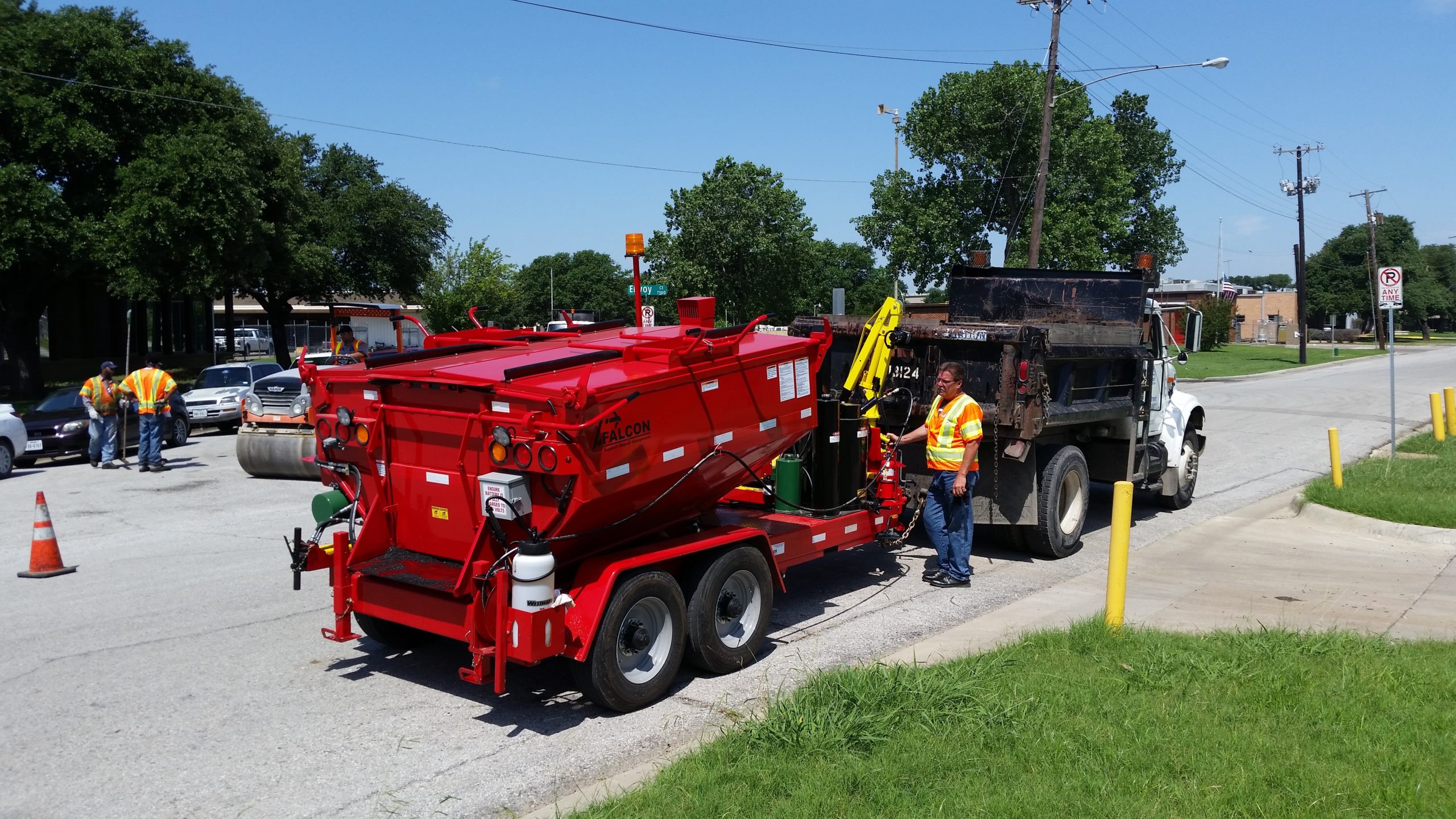
Using the correct pothole patching technique is essential to preventing your work crews from revisiting the same few potholes every season.
If performed the first time correctly, pothole repairs can last several years. However, if a newly emerged hole is patched incorrectly, dishing, lack of adhesion, and loss of material through raveling can occur.
There are four commonly used types of pothole repair methods:
- Throw-and-go
- Throw-and-roll
- Semi-permanent
- Spray injection
Read on to learn more about the pros and cons of these pothole repair techniques.
Pothole Repair Costs
Regardless of the repair technique, three main costs are associated with fixing potholes:
- Labor
- Materials
- Equipment
A great way to reduce costs over the long term is to purchase an asphalt hot box and recycler. It will help increase efficiency, reduce labor requirements, and provide your crews with everything they need to do the job correctly.
Throw-and-Go
This technique is the most commonly used to repair potholes. Using this method, workers quickly shovel asphalt material into the pothole. But they also don’t attempt to clean the hole from water or debris before filling it with the material.
Compaction will often be left up to traffic, or sometimes workers will take a shovel and lightly compact the asphalt before moving on to the next hole. Throw-and-go is popular because only a few workers are needed to perform this inexpensive repair method.
The main downside is that repairs don’t last as long as they do when other methods are applied.
Throw-and-Roll
The throw-and-roll method is one of the oldest pavement patching and repair techniques. Workers shovel material into a pothole (again, without cleaning it out) and then compact it with the tires of their work truck.
Once compacted, the crew needs to ensure a visible crown of material 0.125 in. to 0.25 in. tall. The intentional compaction (versus waiting for traffic to do the job) results in a tighter and longer lifespan of the patch—especially when compared to the throw-and-go technique.
It takes only one to two minutes to perform the compaction, so there’s little lost time due to workers performing the extra step. Potholes patched using the throw-and-roll method tend to need less rework, resulting in increased cost savings and productivity.

Semi-Permanent
This method is considered by many to be the best way to patch a pothole. It consists of manually clearing a pothole from water and debris and squaring the sides to the depth of sound pavement.
Workers then add material to the patch area and compact it with either a single-drum vibratory roller or a vibratory plate compactor. This gets the patch tightly packed and provides exceptional durability.
One of the main downsides to this method is that it requires increased equipment, time, and labor costs. For example, work crews need to take care if they apply cold mix since oncoming traffic could get hit with rocks blown from the pothole. Workers also must sweep away loose gravel after completion of the job.
Spray-Injection
For this method, prepare and clean out water/debris with compressed air versus manually removing it from the hole. They then place material into the pothole. Once filled, a worker drives the truck over the freshly filled pothole four to eight times.
The crew returns 24 hours later to check if the patch surface and pavement have dried. If so, they place a four to six-inch wide band of bituminous tack coat material around the patch perimeter. They then add a layer of cover aggregate on top of the tack material to prevent tracking.
The main downside to this method is that the edge seal material often needs a very long recovery time before workers can reopen the road to traffic. However, the upside to this process is that it requires inexpensive materials and is ideal for repairing transverse cracks.
Falcon Hot Boxes Save Time and Money
Regardless of the method used to patch potholes, a Falcon hot box offers tremendous versatility and will allow your work crews to get more work done in less time. Click below to discover the benefits and value you’ll get from an asphalt hot box.

Recent Comments